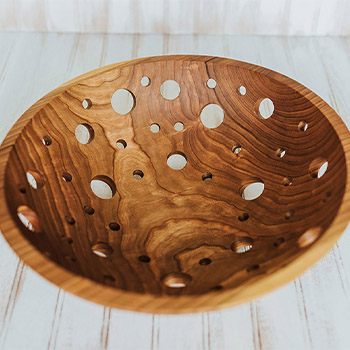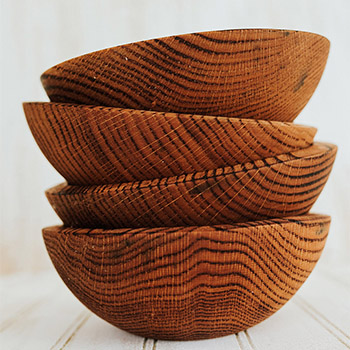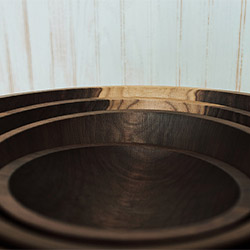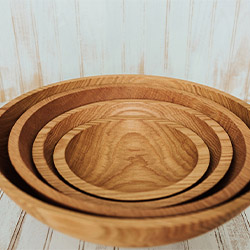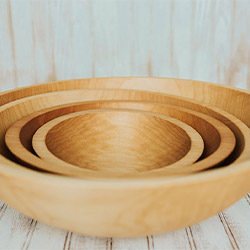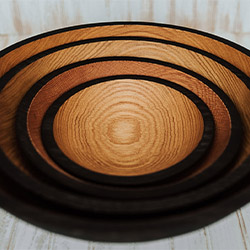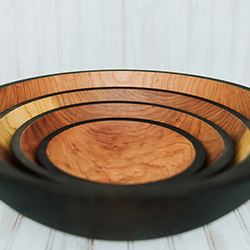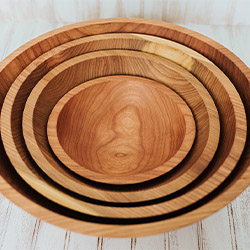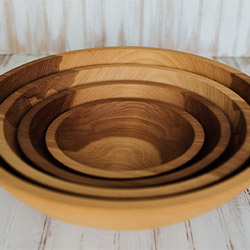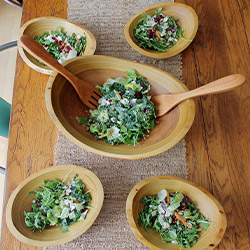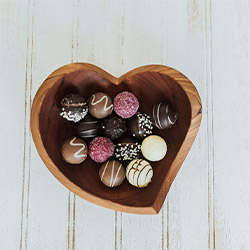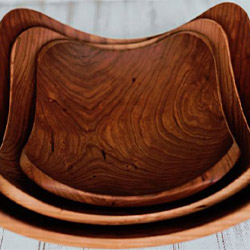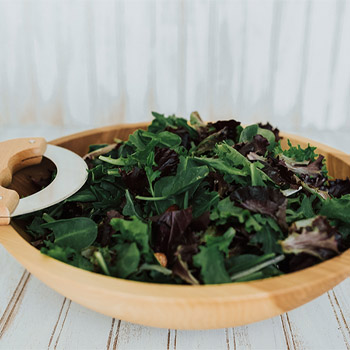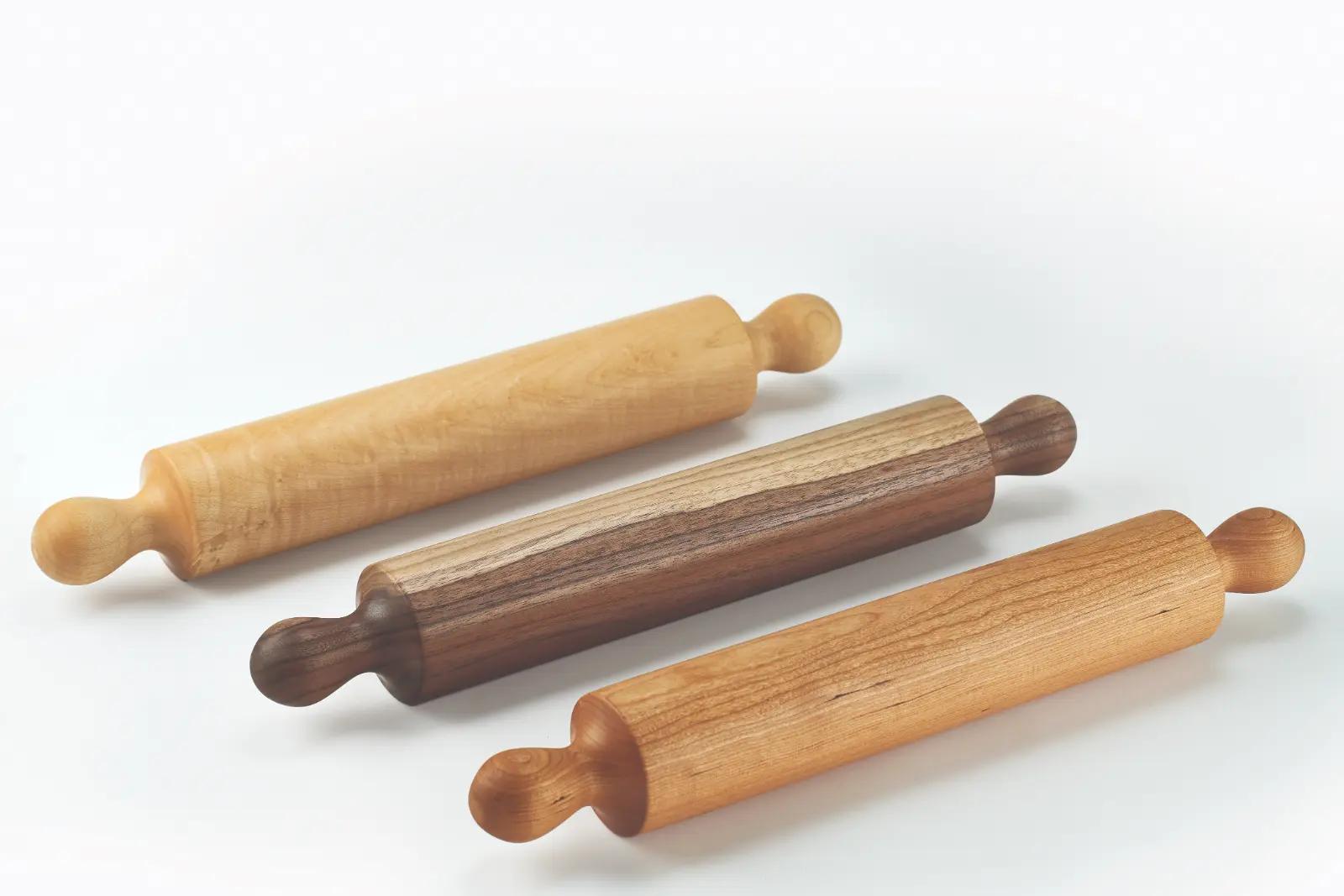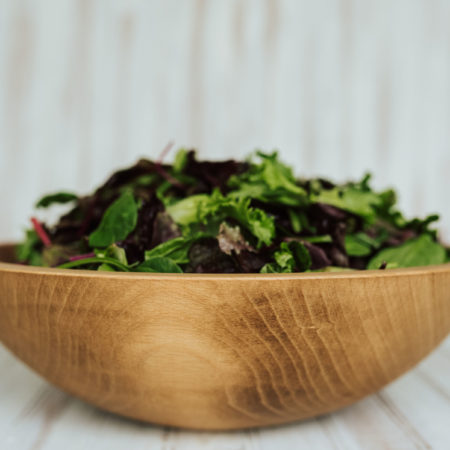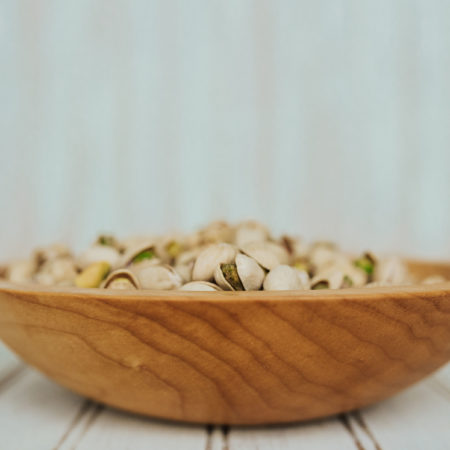You may love the rustic charm of wooden serving platters, but ensuring they remain hygienic can be a bit of a challenge. However, with the right care and maintenance, you can continue to enjoy using these beautiful pieces while keeping them safe for serving food.
From choosing the right type of wood to implementing proper cleaning techniques, there are several key tips to consider. Whether you’re a seasoned host or a newly minted entertainer, these guidelines will help you maintain the cleanliness of your wooden serving platters and ensure they remain a safe and stylish addition to your table.
Key Takeaways
- Prioritize dense, close-grained hardwoods like maple, cherry, and walnut for serving platters
- Use natural cleaning methods and gentle care to maintain cleanliness
- Avoid harsh chemicals and abrasive cleaners to protect the wood surface
- Store wooden serving platters in a cool, dry place with proper ventilation to prevent moisture damage
Wood Selection
When selecting wood for hygienic wooden serving platters, prioritize dense, close-grained hardwoods to ensure durability and resistance to moisture absorption. Wood preservation is crucial in maintaining the integrity of the serving platters and ensuring food safety. Hardwoods such as maple, cherry, and walnut are excellent choices due to their natural resistance to bacteria and moisture. These woods have a tight grain structure that minimizes the risk of harboring bacteria and makes them easier to clean thoroughly.
To enhance wood preservation and maintain food safety, it’s important to avoid using softwoods such as pine or cedar, as they’re more prone to absorbing moisture and can harbor bacteria more easily. Additionally, the use of chemical treatments or finishes on wooden serving platters should be carefully considered, as they can potentially leach harmful substances into food.
When it comes to food safety, the type of wood and its natural properties play a significant role. Dense hardwoods are less likely to absorb liquids and odors, reducing the risk of contamination and making them easier to clean. Choosing the right wood for serving platters not only ensures durability but also contributes to maintaining a hygienic environment for food preparation and presentation. By prioritizing wood selection based on density and resistance to moisture, you can create a safer and more durable serving platform for various culinary delights.
Proper Cleaning
How do you ensure proper cleaning of wooden serving platters to maintain their hygienic properties and food safety standards?
Natural cleaning methods and gentle care are essential to keep wooden serving platters in top condition. Start by wiping the platter with a damp cloth and mild dish soap immediately after use. Avoid soaking the platter or leaving it submerged in water, as this can cause warping or cracking. Once cleaned, thoroughly dry the platter with a clean towel and allow it to air dry completely before storing it.
Regularly apply a food-safe mineral oil or beeswax finish to the wooden platter to help maintain its integrity and prevent it from absorbing food odors and bacteria. This also helps to retain the natural moisture content of the wood. When the platter starts to look dry or dull, it’s a sign that it’s time to reapply the finish.
Never use harsh detergents, bleach, or abrasive cleaners on wooden serving platters, as these can damage the wood and leave behind harmful residues. Additionally, avoid exposing the platter to extreme temperatures or direct sunlight, as this can cause the wood to dry out and potentially crack.
Avoid Harsh Chemicals
To maintain the hygienic properties and food safety standards of wooden serving platters, it’s crucial to avoid using harsh detergents, bleach, or abrasive cleaners, as these can damage the wood and leave behind harmful residues. When cleaning wooden serving platters, it’s important to steer clear of abrasive materials that can scratch the surface, creating crevices where bacteria can thrive. Instead, opt for mild dish soap and warm water to gently clean the surface after each use.
In addition to avoiding harsh chemicals during cleaning, proper storage techniques are essential for maintaining the integrity of wooden serving platters. Ensure that the platters are completely dry before stacking or storing them to prevent moisture from getting trapped between the layers, which can lead to mold and mildew growth. Store the platters in a cool, dry place away from direct sunlight and sources of heat to prevent warping or cracking. Consider using a breathable cover to protect the platters from dust and debris while still allowing air circulation.
Dry Thoroughly
After cleaning, ensure the wooden serving platters are thoroughly dried before storing to prevent moisture-related issues.
Here are three essential tips to ensure your wooden serving platters are dried thoroughly and effectively:
- Air drying: After washing the wooden serving platters with mild soap and water, rinse them thoroughly to remove any soap residue. Then, place the platters in a well-ventilated area to air dry completely. Avoid stacking wet platters on top of each other, as this can trap moisture and prolong the drying process. Instead, lay them out in a single layer to allow for optimal air circulation.
- Moisture prevention: To prevent moisture from lingering on the wooden serving platters, use a clean, dry cloth to pat them down after air drying. Pay special attention to any crevices or carved areas where water may accumulate. It’s crucial to ensure that no moisture is left behind, as this can lead to mold growth and warping of the wood over time.
- Proper storage: Once the wooden serving platters are completely dry, store them in a cool, dry place away from direct sunlight and heat sources. Storing them upright or flat on a shelf, rather than stacked, can further prevent moisture buildup and prolong the life of the wood.
Oil Maintenance
Once the wooden serving platters are thoroughly dried, the next essential step is to maintain their condition through proper oiling. Proper oil maintenance is crucial for wooden serving platters to ensure their longevity and to prevent them from drying out or cracking. The seasoning process involves applying a thin layer of food-grade mineral oil or a specialized cutting board oil to the clean and dry wooden surface. This helps to moisturize the wood, creating a protective barrier against moisture and bacteria.
To begin the oiling process, ensure that the wooden surface is clean and completely dry. Using a clean cloth, apply a liberal amount of mineral oil to the entire surface of the wooden platter, including the sides and edges. Allow the oil to penetrate the wood for about 20 minutes, then wipe off any excess oil with a dry cloth. Proper seasoning techniques involve repeating this process at least once a month or more often if the wooden platter is frequently used.
It’s important to note that using cooking oils or other unsuitable products for seasoning can lead to rancidity and an unpleasant odor. Stick to food-grade mineral oil or specialized cutting board oils specifically designed for wooden kitchenware.
Regular Sanitizing
To maintain hygienic wooden serving platters, it’s crucial to regularly sanitize them.
You should sanitize the platters after each use, especially if they come into contact with raw meat or other potentially harmful foods.
Use effective cleaning methods and sanitizing products to ensure thorough and safe sanitation.
Sanitizing Frequency
Regularly sanitize wooden serving platters to maintain high hygienic standards and prevent the spread of bacteria. To ensure optimal cleanliness and safety, follow these recommendations:
- Daily Wipe Down: After each use, wipe down the wooden serving platter with a damp cloth and mild dish soap. This helps remove any surface contaminants and food residue.
- Weekly Deep Clean: Once a week, sanitize the wooden serving platter using a sanitizing solution or a mixture of vinegar and water. This thorough cleaning helps eliminate any lingering bacteria or odors.
- Monthly Oil Treatment: Apply food-grade mineral oil to the wooden serving platter every month to maintain its quality and prevent moisture absorption, which can harbor bacteria.
Effective Cleaning Methods
For effective regular sanitizing of wooden serving platters, utilize a food-grade sanitizing solution or a mixture of vinegar and water. Natural disinfectants like vinegar have antimicrobial properties that effectively eliminate germs from the surface of wooden platters.
To create an eco-friendly cleaning solution, mix equal parts of water and vinegar in a spray bottle. Spray the solution onto the wooden platter and wipe it down with a clean cloth. Ensure that the platter is completely dry before storing or using it again.
This method not only helps in maintaining the hygiene of the platter but also ensures that no harmful chemical residues are left behind, making it safe for serving food. Regular use of natural disinfectants promotes a healthy and sustainable approach to cleaning wooden serving platters.
Sanitizing Products
When maintaining the hygiene of wooden serving platters, consider utilizing sanitizing products for regular disinfection, such as food-grade sanitizing solutions or a mixture of vinegar and water. Here are three effective options for regular sanitization:
- Food-Grade Sanitizing Solutions: These solutions are specifically designed for sanitizing surfaces that come into contact with food. They’re safe, effective, and ideal for maintaining hygienic food presentation.
- Vinegar and Water Mixture: A simple yet powerful natural disinfectant, this mixture can be used to sanitize wooden serving platters regularly. It’s an eco-friendly option that helps in keeping the platters clean and safe for serving food.
- Hygienic Food Presentation: Regular sanitization not only ensures the cleanliness of wooden serving platters but also contributes to hygienic food presentation, providing a sense of trust and belonging for those enjoying the food.
Surface Protection
To maintain the surface of your wooden serving platters, applying oil for protection is essential. Regular cleaning and care are also crucial to ensure the longevity of the wood.
Additionally, it’s important to avoid moisture damage by keeping the platters dry and storing them in a well-ventilated area.
Oil for Protection
Using a food-safe mineral oil or a blend of mineral oil and beeswax provides an effective protective layer for wooden serving platters. This helps maintain the wood’s integrity, preventing it from drying out, cracking, or absorbing food odors. When applying oil for protection, ensure thorough coverage and allow proper drying time to achieve optimal results.
Here are three key points to consider:
- Regular Maintenance: Applying oil regularly helps preserve the wood and maintain its natural luster, extending the lifespan of your serving platter.
- Natural Oils: Consider using natural oils like coconut or walnut oil as alternative options for protecting wooden serving platters.
- Seasoning: Properly seasoning the wooden platter with oil creates a barrier against moisture and bacteria, ensuring its hygienic use for serving food.
Cleaning and Care
Wondering how to effectively clean and protect your wooden serving platter? Use natural disinfectants like white vinegar or lemon juice to clean the surface. Mix one part vinegar or lemon juice with one part water and wipe down the platter.
Avoid using harsh chemicals that can damage the wood and affect the taste of the food. For tougher stains, sprinkle salt on the surface and rub it with a cut lemon, then rinse with water and dry thoroughly.
To protect the wood, apply a thin layer of food-grade mineral oil every few weeks. This will help maintain the wood’s moisture and prevent it from drying out or cracking.
Opt for eco-friendly cleaning products to ensure the longevity of your wooden serving platter.
Avoiding Moisture Damage
Ensure the longevity of your wooden serving platter by applying a protective layer to guard against moisture damage. This will prevent warping and maintain the integrity of the wood over time. To protect your wooden serving platter from moisture damage, follow these essential steps:
- Apply a Food-Safe Finish: Use a food-safe wood finish, such as mineral oil or beeswax, to create a barrier against moisture. This helps to prevent the wood from absorbing liquids and minimizes the risk of warping.
- Regular Maintenance: Reapply the protective finish as needed, especially after washing or when the wood appears dry. This will ensure continuous protection against moisture and maintain the appearance of your serving platter.
- Proper Storage: Store your wooden serving platter in a cool, dry place away from direct sunlight or sources of heat. Storing it properly helps to prevent exposure to excessive moisture and temperature fluctuations, which can lead to warping.
Avoid Cross-Contamination
To prevent cross-contamination, always clean and sanitize wooden serving platters thoroughly between uses. Cross-contamination occurs when bacteria or other microorganisms are transferred from one food to another, posing a risk to food safety. Wooden serving platters, if not properly maintained, can harbor bacteria and spread them to different food items. Following proper cleaning and sanitizing procedures is essential for preventing this risk.
| Precautions |
Description |
| Use separate platters |
Use different platters for raw and cooked foods to avoid the transfer of bacteria between them. |
| Clean with hot, soapy water |
Wash the platter with hot, soapy water after each use to remove any food residue and bacteria. |
| Sanitize after washing |
After cleaning, sanitize the platter with a solution of bleach and water or a food-safe sanitizer to kill any remaining bacteria. |
| Air dry thoroughly |
Allow the wooden platter to air dry completely before storing it to prevent the growth of bacteria in damp areas. |
| Regular maintenance |
Periodically sand and oil wooden serving platters to maintain their integrity and prevent bacteria from penetrating the surface. |
Safe Food Handling
After thoroughly cleaning and sanitizing wooden serving platters to prevent cross-contamination, it’s crucial to practice safe food handling to maintain food safety standards.
Here are some essential tips for safe food handling on wooden surfaces:
- Temperature Control: Always ensure that hot foods are kept hot (above 140°F) and cold foods are kept cold (below 40°F) to prevent the growth of harmful bacteria. Use separate wooden platters for hot and cold foods to minimize the risk of bacterial growth.
- Avoiding Cross-Contamination: To prevent cross-contamination, designate specific wooden serving platters for different types of foods, such as raw meats, cooked meats, fruits, and vegetables. Clean and sanitize the wooden platters thoroughly between uses to avoid the transfer of harmful bacteria from one type of food to another.
- Proper Cleaning and Maintenance: Clean wooden serving platters with hot, soapy water after each use. Sanitize them regularly with a food-safe disinfectant. Additionally, it’s essential to oil wooden surfaces regularly to maintain their integrity and prevent moisture from seeping into the wood, which can harbor bacteria.
Inspection for Damage
Inspect wooden serving platters for any signs of damage, such as cracks, splinters, or warping, to ensure they remain safe for food service. Regular inspection is crucial for damage prevention and maintaining the quality of the platters. Any damage should be promptly repaired to prevent further deterioration and to uphold hygiene standards.
When conducting an inspection, use the following table as a guide to assess the condition of your wooden serving platters:
| Damage Type |
Assessment |
| Cracks |
Check for any visible cracks on the surface or edges of the platter. Run your fingers along the cracks to ensure there are no sharp edges or splinters. |
| Splinters |
Look closely for any small, protruding splinters that could cause injury or contaminate food. Use a sanding block to smooth out any splintered areas. |
| Warping |
Place the platter on a flat surface to check for any warping or unevenness. Warped platters may not provide a stable base for food presentation. |
After assessing the platters, attend to any necessary repairs immediately. For minor issues such as small cracks or splinters, gently sand the affected areas to smooth them out. More significant damage, such as extensive cracking or warping, may require professional repair or replacement to maintain the integrity of the platter.
Regular quality assessment and maintenance are essential to ensure that your wooden serving platters remain in optimal condition for hygienic food service.
Storage Practices
Regularly maintaining the condition of your wooden serving platters, including appropriate storage practices, is essential for ensuring hygienic food service. Proper seasoning and humidity control are crucial for preserving the quality of your wooden serving platters. Here are three key storage practices to ensure the longevity and hygiene of your wooden serving platters:
- Proper seasoning: Before storing your wooden serving platters, ensure they’re thoroughly seasoned with food-grade mineral oil or beeswax. Seasoning helps to maintain the wood’s moisture content and prevents it from drying out or warping during storage. This practice also creates a protective barrier that repels moisture and bacteria, contributing to the overall hygiene of the platters.
- Humidity control: Store your wooden serving platters in a cool, dry place with consistent humidity levels. Fluctuations in humidity can cause the wood to expand and contract, leading to cracks and warping. Consider using a dehumidifier or moisture-absorbing packets in the storage area to regulate humidity and protect the wooden platters from potential damage.
- Avoid stacking: When storing multiple wooden serving platters, it’s essential to avoid stacking them directly on top of each other. Stacking can trap moisture between the platters, creating an ideal environment for mold and bacteria growth. Instead, place a soft cloth or parchment paper between each platter to allow air circulation and prevent moisture buildup.
Review
Maintaining hygienic wooden serving platters requires careful wood selection, proper cleaning, and avoiding harsh chemicals.
For safe food handling, it’s important to dry thoroughly, perform oil maintenance, and avoid cross-contamination.
Regular inspection for damage and proper storage practices are also essential.
By following these tips, you can ensure that your wooden serving platters remain in good condition and safe for use.

